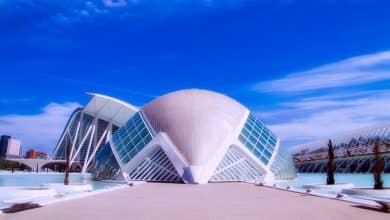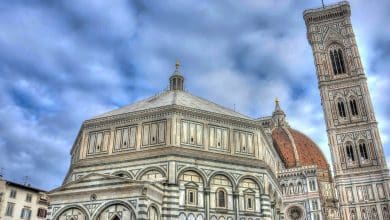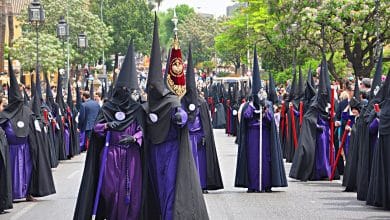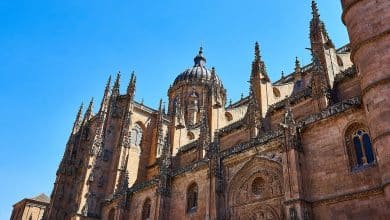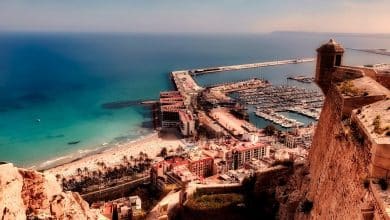Salvador Dalí Museum In Barcelona Tours and Tickets

Almost everyone on the planet has heard of Salvador Dali’s name.
Surrealism was born out of his work and the quirks he was recognized for. He’s a well-known artist and person all around the world. Due to his mixing of seemingly mismatched images with abstract notions and ideas, his art is still admired even in current times.
Hundreds of visitors and art fans flock to Catalonia each year to see Dal’s paintings in person because the artist was born and bred there.
Interested in learning more about Dal and experiencing his mind-boggling art for yourself? Then Barcelona, one of the most touristy attractions in Spain, maybe the right choice for you. Some of the most significant sites in Barcelona where Dal’s work may be viewed are examined in further depth here.
Despite the fact that Dal never lived in Barcelona, many of the most critical spots in his life may be found in the close vicinity of the city. Using the city’s public transit system, visitors to Barcelona may reach these destinations in a jiffy.
The city of Barcelona is a wonderful place to visit for Dal fans. Salvador Dali’s footsteps may be retraced on short trips to Catalonia, and tourists can see the artist’s impact everywhere they look. It’s easy to go to the city’s most prominent landmarks. “The Dalinian Triangle” is a colloquial name for the three important Dal locations connected by lines and forming a triangle.
Visitors go by the millions to this museum, housed in the town where Dal grew up. No one can deny that Dal’s creation is a unique and spellbinding structure that completely meets his own needs: The narrator declares, “I want my museum to be a single block, a labyrinth, and a magnificent surrealist item. In other words, it will be a museum dedicated completely to the performing arts. People who see it will feel like they’ve just awoken from a magical theatrical dream.”
The museum has the largest and most complete collection of Dali’s work. Along with Dal’s art collections, the museum also displays a wide range of exciting items that complement the paintings. On the exterior of the building is a geodesic dome that affords some exciting views. You have to see it to believe it. Because Dal lies hidden beneath the stage, this is a key place for Dal aficionados.
It is located in Figueres, a little town around 140 kilometers north of Barcelona. Dal used to reside in Figueres.
This page will simply refer to the “Dal Museum” even though its official name is “Teatre-Museu Dal,” which translates to “Dal Theatre-Museum.”.
The Dal Museum houses a large collection of surrealist works by the artist. In addition, Dal’s wacky inventions include huge eggs, a woman on top of the old vintage car, and other everyday items hanging from the ceiling.
You may be able to get there on your own, but a guided tour is the most efficient and stress-free way to go to the Dal Museum from Barcelona. Driving is the only way to get there.
The Dal Museum’s popularity implies that there is likely to be a long line of people waiting to enter. In exchange for your package cost, you may avoid the lines and obtain fast entry tickets to any of the Dal excursions mentioned below.
Who was Salvador Dali?
Salvador Dal’s genius was primarily credited with inspiring Surrealism. A Catalan artist, Dal worked in illustration, sculpture, literature, and cinematography in addition to his work as an artist and illustrator. The amazing surrealist vision and flamboyant personality that Dal brought to his work made him one of the most well-known painters of the twentieth century. There is no Dali museum in Barcelona. In the vicinity of Barcelona, there are three museums dedicated to Dal.
Figueres, about two hours north of Barcelona by car or train, is home to the Dal Theatre-Museum. The museum is named for the artist. You may go to the Dal Museum by bus, train, or by joining a group or small group tour. The town of Figueres, where Dal was born and died, preserves his name. Salvador Dal founded the Salvador Dal Theatre-Museum in Figueres, Spain, the town where he was born. In terms of surrealist art, this is the biggest work ever made. On the Costa Brava shore, between Cadaques and the French border, you may also visit Dali’s home. The childhood house of Dal’s wife Gala, Castell Gala, is also accessible to the public.
Where is Dalí buried?
Dal was laid to rest in a crypt that is part of the Dal Theatre and Museum, which is located near his birthplace of Figueres, Spain. It first opened its doors in 1974 and was designed by the artist.
Why is Dalí famous?
While studying painting in Madrid and Barcelona, Dal developed an extraordinarily high degree of technical proficiency as a painter and absorbed a wide range of creative styles. It wasn’t until the late 1920s that Sigmund Freud’s works on the sexual importance of subliminal images and his involvement with the Paris Surrealists led to his mature creative style, but both of these events were a catalyst for the creation of his mature artistic style. His mature creative style was shaped by these occurrences. Dal used a method he referred to as “paranoiac essential” to induce hallucinations in himself so that he could access subconscious images and bring them to the surface.
From 1929 until 1937, Dal produced the paintings that made him one of the world’s most famous surrealists. When he found that method, his painting style expanded rapidly and he went on to become the world’s most famous surrealist artist. He created a bizarre and illogical dreamworld in which everyday objects are arranged in an unpleasant and perplexing way, twisted or otherwise changed. For Dal, the subjects were painted in careful detail and framed by harsh, bright landscapes reminiscent of his home Catalonia, where he grew up. An iconic example is Alfred Hitchcock’s The Persistence of Memory (1931), which depicts a quiet landscape punctuated by the motionlessness of melting watches on a tabletop. Salvador Dal and Luis Buuel collaborated on two surrealistic films: Un Chien Andalou (1929; An Andalusian Dog) and L’ ge d’or (1930; The Golden Age). The imagery in each of these flicks is both gruesome and evocative at the same time.
It was Raphael, a Renaissance painter, who had a major influence on Dal’s late 1930s choice to switch to a more academic style of painting. Because of his uncertain political views at a time when fascism was on the rise, he fell out of favor with his fellow Surrealists and was eventually expelled. After that, he spent a lot of time designing theatrical sets, the interiors of upscale boutiques, and jewelry. From 1940 through 1955, he spent much of his time in the United States, where he displayed his prowess in extravagant self-promotional acts. From 1950 through 1970, Dali produced a number of works with religious themes despite his continuous interest in sensuous subjects, childhood recollections, and motifs centered on his wife Gala. From 1950 through 1970, he was at the height of his success. The artist’s later works, despite their more impressive technical accomplishments, don’t command the same level of awe and reverence as his early ones, despite their chronological order of creation. One of Salvador Dal’s most fascinating and eye-opening pieces is “The Secret Life of Salvador Dal” (1942).
History of the Salvador Dalí Museum
The Morses decided to part with their Dal collection in the mid-1970s after originally exhibiting some of the artwork in their home. After reading a Wall Street Journal article with the headline “U.S. Art World Dillydallies Over Dal,” locals of St. Petersburg, Florida, banded together to bring the collection to their city. St. Petersburg’s Dal Museum opened its doors for the first time back in 1982. The museum’s magnificent new facility, which opened on January 11th, 2011, allowed it to better protect and showcase its collection, welcome visitors, educate them and foster a love of learning. In a larger sense, it’s a beautiful place that’s dedicated to education and growth, much like Salvador Dali’s art was.
Salvador Dalí USA Museum Tours
Hours
The Dal is open every day from 10 am to 6 pm (Thursdays until 8 pm). Please see the list of upcoming special hours. On both Thanksgiving and Christmas days, the museum will be closed to the public.
Parking
The cost of convenient on-site parking ranges from $10 to $20 depending on the number of visitors and the availability of parking spaces. Members can park for free as long as space is available. No refunds will be given for parking purchases. The St. Petersburg Downtown Looper tram and numerous surface lots, streets, and city parking facilities are additional options. Parking charges might vary.
Safety and Health Procedures
Visitors, workers, members, and volunteers at the museum are protected by a range of health and safety measures.
Approaching via Tampa
Take I-275 south to St. Petersburg via the Howard Frankland Bridge. Tropicana Field is located at exit #22 (I-175 E). Follow I-175 all the way to its terminus, when it merges with Dal Blvd (aka 5th Ave S). After the fourth light, you’ll see the Dali Museum on your right.
Approaching via Clearwater
Take I-275 south to St. Petersburg via the Howard Frankland Bridge. Tropicana Field is located at exit #22 (I-175 E). Follow I-175 all the way to its terminus, when it merges with Dal Blvd (aka 5th Ave S). After the fourth light, you’ll see the Dali Museum on your right.
Approaching via Sarasota
To get to St. Petersburg, use I-75 North to I-275 North, and then pay $1.50 to cross the Sunshine Skyway Bridge. Tropicana Field is located at exit #22 (I-175 E). Follow I-175 all the way to its terminus, when it merges with Dal Blvd (aka 5th Ave S). After the fourth light, you’ll see the Dali Museum on your right.
Salvador Dalí U.S Museum Tickets
Tiqets offers the most affordable all-inclusive admission price to the Dal Museum. This removes the need to purchase museum admission tickets in advance and to stand in line. It’s as simple as printing off the vouchers, showing up, and letting them handle the rest.
Return transportation from Barcelona (Estació del Nord) is included in the trip price, as is admission to the museum. Children under the age of eight pay €31.00 for their tickets. Booking the tickets and the bus individually would cost €55.00 per person (€9.00 per person). Thus this is a great deal.
Official website: https://thedali.org/

